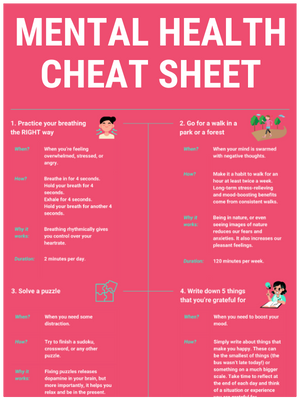Does the idea of sharing your feelings with others immediately make you cringe? My answer used to be yes. For many years of my life, I bottled my emotions up and it turned out this was doing me more harm than good.
Learning to be emotionally vulnerable is the key to learning to heal your inner wounds and helps you connect on a deeper level with those closest to you. And when you can stop putting a wall between you and the world around you, you open yourself up to experiencing life on a whole new level.
In this article, I will show you tangible steps to shed the emotional armor that is creating a barrier between you and those you love.
Contents
What is the purpose of our emotions?
From an evolutionary perspective, researchers argue that our emotions are designed to help us keep a state of homeostasis to survive. In other words, emotions like fear or love have helped us survive as a species and ward off threats throughout the years.
In a modern context, emotions are signals cueing us to our current inner state. I like to think of my emotions as a message about what’s going right in my life or what I might need to change.
With emotions being useful messages from ourselves to ourselves, it seems that we shouldn’t ignore them as often as we do in today’s society. I’m guilty of it. It’s easier to turn Netflix on at the end of a rough day instead of sitting down and telling my husband what’s actually bothering me.
But even the research demonstrates that individuals who are more in touch with their own emotions and the emotions of others experience less stress and greater levels of well-being. So it would seem that learning to understand and navigate our own emotions is worth our time.
Why emotional vulnerability is a good thing
There is no denying that being emotionally vulnerable can feel scary. No one likes the idea of potentially being rejected or hurt by opening up about your feelings.
It may surprise you to learn that the research shows that individuals who are able to be emotionally vulnerable are actually better able to regulate their emotions overall. It’s almost as though by not sharing what we’re feeling we allow that feeling to escalate out of control.
I have found this to ring true for me personally too many times to count. I remember in college my boyfriend did something that really hurt my feelings.
Instead of talking to him about what I was feeling, I tried to let it go because I didn’t want to come off as “needy” or “crazy”. What ended up happening was those feelings festered for months and I stopped developing emotions toward the guy because I grew resentful.
Essentially it resulted in the relationship ending because I couldn’t admit to what I was feeling and what I needed in the relationship. Just a smidge of emotional vulnerability could have salvaged that relationship.
So if you want to connect and experience healthy relationships in your life, I’d say it’s time to fully embrace the realm of emotional vulnerability.
5 ways to be emotionally vulnerable
These 5 tips will help you abandon the fear surrounding emotional vulnerability and open your heart in a way that leaves you feeling more like yourself than you have in years.
1. Speak your truth
The first step to being emotionally vulnerable is to learn how to verbalize what you think and feel. It sounds simple, but it’s actually the hardest part.
As a new grad physical therapist, I remember having anxiety about the need to perform in order for my coworkers and boss to respect me. I was terrified of admitting what I didn’t know or that I was afraid of my own profession.
I developed a relationship with one of my coworkers where I finally opened up about not feeling good enough as a new grad and all of the stressors that I was putting on myself.
By saying it out loud, I was able to actually let it go and my coworker was able to guide me to healthy ways to deal with those emotions.
It’s easier to smile and nod instead of saying what you’re actually feeling. But when you speak your truth regarding your own emotions, you feel lighter and open yourself up to authentic connections with those around you.
2. Embrace all of your emotions
Part of learning to be vulnerable with your emotions is allowing yourself to experience all of your emotions. This means both the good and the not-so-fun emotions.
If you pretend to be happy all of the time and don’t embrace sadness or frustration when it comes around, then you won’t be able to effectively cope when life hands you curve balls.
I had to learn how to get vulnerable with myself and what I was really feeling back in PT school. I hit a hard depression during my second year and instead of admitting I felt depressed, I tried to distract myself and ignore those feelings.
Needless to say, this blew up in my face eventually. Because I couldn’t face my own feelings and allow myself to experience the highs and the lows, I eventually had no choice but to be emotionally vulnerable with a therapist to get the help I needed.
Get real with what you’re feeling and give yourself permission to feel your emotions. This creates a space from which you can be emotionally vulnerable with yourself and with others.
3. Create safe spaces
When it comes to the relationships in your life, it’s important that you develop safe spaces for sharing your feelings with each other. These safe spaces can be literal physical spaces or sometimes it’s as simple as a shared word that cues your partner to your needs.
My husband and I have a code word that we use when we need to share what we’re really feeling. When we use that code word, we promise each other that we will be quiet and let the other person say everything they need to before responding.
It’s taken practice, but developing this safe space has allowed us to share tough feelings amidst arguments and it has helped us better communicate our needs in the relationship.
It really can be scary to share how you feel, but having a safe space just makes it that much easier to be emotionally vulnerable.
4. Write it all down
Another great way to become more emotionally vulnerable is to write all of your feelings down. This allows you to see exactly what you’re feeling and better sort through what you need to communicate with others.
When I’m really upset or if something is bothering me, I force myself to write down all my thoughts and feelings unorganized on a piece of paper. This helps me to visually confront what I’m feeling.
Once I have my emotions staring back at me in physical form, I feel like I can determine how to best share them with others. It helps me better connect to what needs to be communicated, which then allows me to feel confident when approaching the conversation with the people involved.
5. Ask yourself questions
Sometimes when we’re avoiding being emotionally vulnerable we need to start by asking ourselves some hard questions. The one that I tend to default to asking myself is “What are you afraid of?”
When we don’t want to be emotionally vulnerable, it typically stems from a place of fear. I’ve often avoided sharing my emotions out of fear that I will embarrass myself or that those around me won’t accept me for who I am.
But what has helped me overcome the fear is to ask myself yet another question. What do you risk by not sharing your feelings? In many cases, I risk my own mental well-being and sacrifice the depth of that relationship.
Through asking these questions, I’m typically able to convince myself that being emotionally vulnerable is actually the less risky option when it comes to fostering healthy relationships with myself and others.
💡 By the way: If you want to start feeling better and more productive, I’ve condensed the information of 100’s of our articles into a 10-step mental health cheat sheet here. 👇
This Cheat Sheet Will Help You Be Happier and More Productive
Thrive under stress and crush your goals with these 10 unique tips for your mental health.
Wrapping up
Being emotionally vulnerable doesn’t have to make you cringe. You can learn to embrace your emotions and communicate your feelings with grace to help all your relationships flourish by using the tips from this article. And by shedding the armor surrounding your emotions, you just might start to feel invincible.
Do you find it scary to be emotionally vulnerable? When was the last time you let your guard down? And what’s your favorite tip to share with others to be more emotionally vulnerable? I’d love to hear from you in the comments below!


